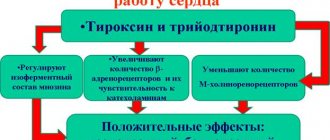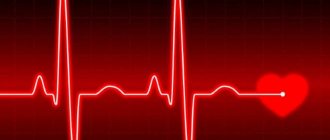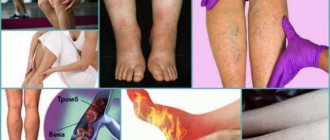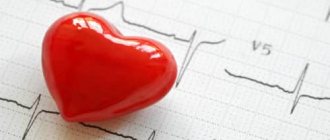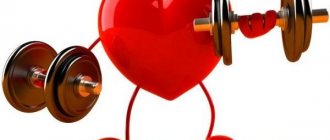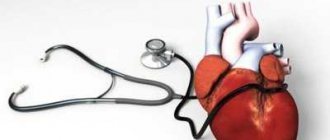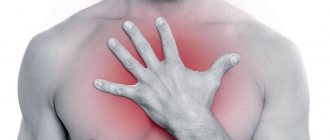Types of heart pathology
Diseases can have a wide variety of causes and clinical forms. Several groups can be roughly defined:
- heart defects, vascular defects (congenital and acquired);
- inflammatory diseases (myocarditis, endocarditis, pericarditis);
- cardiac ischemia;
- dystrophic diseases of the heart muscle.
The pathology is so diverse that within such a specialty as cardiology, narrower specializations of doctors have emerged who deal with specific problems, for example, a cardiorheumatologist is a specialist in inflammatory diseases, a cardiac surgeon performs operations on the heart and blood vessels, which are necessary in the development of anatomical defects (malformations). , trauma) and impaired blood supply to the myocardium (ischemic disease).
Which doctor treats the heart?
Doctors of various profiles and specialties treat cardiovascular diseases.
These include general practitioners (cardiologists and arrhythmologists) and surgical doctors (cardiac surgeons and interventional surgeons).
The need for help from a specific specialist depends on the type of heart disease, its stage, severity, as well as the general condition of the patient at the time of the examination.
According to WHO, coronary disease today is one of the main causes of death or disability in people. Almost every person experiences some form of heart disease. However, diseases can have a different nature and clinical form, so it became necessary to separate the specialties of doctors treating the heart.
A doctor of any specialty must be able to treat the most common diseases of the cardiovascular system. There are several medical specialties whose goal is to treat only heart disease. These include:
- cardiologist;
- arrhythmologist;
- cardiac surgeon;
- interventional surgeon.
It should be noted that there is a division of these specialists into adults and children. Treatment of diseases in children requires special preparation, so you should contact a competent pediatrician.
A cardiologist is a therapeutic doctor who diagnoses, treats and prevents diseases of the heart and blood vessels.
The responsibilities of a cardiologist include identifying, treating and preventing heart diseases such as:
- Coronary heart disease (CHD). This disease is associated with damage to the heart vessels by atherosclerosis. As a result, the lumen of the blood vessels narrows and blood flow to the heart muscle (myocardium) decreases. This can lead to pain in the heart and behind the breastbone (angina), necrosis (death) of the myocardium (myocardial infarction), heart rhythm disturbances, heart failure, and even sudden cardiac death.
- Myocarditis. This is a group of inflammatory diseases of the heart muscle. They can be viral, bacterial, fungal, protozoal (caused by Protozoa) and aseptic (occurs without certain microorganisms). Viral myocarditis is more common and can complicate any viral infection. In second place in terms of prevalence are aseptic myocarditis, which occurs against the background of systemic connective tissue diseases (against the background of systemic scleroderma, systemic lupus erythematosus, rheumatoid arthritis, dermatopolymyositis, etc.).
- Cardiomyopathies. These diseases are characterized by non-inflammatory damage to the heart muscle. They are divided into primary (they are an independent disease) and secondary (occur against the background of some other pathology). Primary cardiomyopathy includes dilated (a significant expansion of the chambers of the heart occurs), hypertrophic (a significant increase in myocardial mass occurs), restrictive (a sharp limitation in the contraction of the heart muscle occurs) cardiomyopathy. Primary cardiomyopathies also include Brugada syndrome, non-compact myocardium of the left ventricle, and arrhythmogenic dysplasia of the right ventricle. Primary cardiomyopathies are very rare, unlike secondary ones. Secondary cardiomyopathies include endocrine (arising against the background of diseases of the endocrine system - thyrotoxicosis, hypothyroidism, acromegaly, hypercortisolism, pheochromocytoma, etc.), uremic (occurring against the background of uremia - terminal renal failure), gouty (developing against the background of excess uric acid in the blood) , hypertensive (occurs against the background of arterial hypertension - high blood pressure), ischemic (develops against the background of coronary artery disease), toxic (occurs against the background of exposure to toxins such as alcohol, cobalt, etc.) and other cardiomyopathies.
- Heart defects. These diseases are characterized by a violation of the structure of the heart. They arise either during intrauterine development (congenital defects) or are acquired during life (acquired defects). These diseases are also divided into valvular (stenosis and valve insufficiency) and non-valvular (defects of the atrial, interventricular septum, etc.).
- Heart failure. This term refers to a condition that is characterized by a decrease in the pumping function of the heart. There are acute (develops within a few minutes or hours) and chronic (develops over many years) heart failure. Heart failure is also divided into diastolic (disturbed diastole - relaxation of the heart), systolic (disturbed systole - contraction of the heart) and mixed (systole-diastolic).
- Endocarditis. This is a group of inflammatory diseases of the inner lining of the heart - the endocardium. It can be infectious (bacterial, viral, fungal, etc.) and non-infectious. Often diseases from this group occur in drug addicts who use intravenous drugs.
- Arrhythmias. This is a group of diseases that are characterized by heart rhythm disturbances. There are supraventricular (sinus tachycardia, sinus bradycardia, sick sinus syndrome, supraventricular extrasystoles, paroxysmal supraventricular tachycardia, atrial fibrillation and flutter, etc.) and ventricular (ventricular extrasystoles, ventricular tachycardia, flutter and ventricular fibrillation) variants of heart rhythm disturbances.
Types of heart pathology
Diseases can have a wide variety of causes and clinical forms. Several groups can be roughly defined:
- heart defects, vascular defects (congenital and acquired);
- inflammatory diseases (myocarditis, endocarditis, pericarditis);
- cardiac ischemia;
- dystrophic diseases of the heart muscle.
The pathology is so diverse that within such a specialty as cardiology, narrower specializations of doctors have emerged who deal with specific problems, for example, a cardiorheumatologist is a specialist in inflammatory diseases, a cardiac surgeon performs operations on the heart and blood vessels, which are necessary in the development of anatomical defects (malformations). , trauma) and impaired blood supply to the myocardium (ischemic disease).
Additional specializations of cardiologists
In addition to the immediate treatment process, diagnosing the condition of the organ itself and blood vessels is important, so cardiologists receive additional specialties, for example, a cardiologist-ultrasound specialist (conducts ultrasound diagnostics of the heart, blood vessels), a cardiologist-specialist in functional diagnostics (interprets ECGs, performs bicycle ergometry, etc.) .
In addition to the immediate treatment process, diagnosing the condition of the organ itself and blood vessels is important, so cardiologists receive additional specialties, for example, a cardiologist-ultrasound specialist (conducts ultrasound diagnostics of the heart, blood vessels), a cardiologist-specialist in functional diagnostics (interprets ECGs, performs bicycle ergometry, etc.) .
Make an appointment with a cardiovascular surgeon
You can get an appointment at the medical center by appointment. The service is provided for a fee, but its cost is objective and accessible to a wide range of patients. You can make an appointment to be examined by a cardiovascular surgeon at the hospital by calling (499) 400-47-33. The center's consultants will answer any questions: how much does an appointment cost, what tests are needed, when and where does a cardiovascular surgeon of the highest category see the doctor. You can also make an appointment on the website.
Cases of manifestation of vascular pathologies are not exceptional. Recently, the frequency of their manifestation has increased significantly and a vascular doctor is required not only by the elderly population, but also by young people. Read this article to the end to find out everything about the thinnest blood vessel in humans.
Doctors themselves associate this trend with a significant deterioration in the environmental picture of large cities and people’s constant presence in stressful situations. Poor nutrition in combination with bad habits also leaves its mark.
Interesting fact! Women experience varicose veins several times more often than men; a phlebologist or vascular specialist associates this feature with women wearing high heels.
Detection and treatment of vascular pathologies is a rather complex task. A person with such diseases turns to a therapist, who subsequently gives a referral to a specialist - a phlebologist. After a series of examinations, the doctor determines the diagnosis and selects adequate treatment.
It should also be noted that there are millions of vessels in the human body, and they all have different localizations. Depending on the nature and type of affected vessels, the problem can be dealt with by different specialists: a neurologist, cardiologist, angiologist and phlebologist. You should find out which doctor deals with blood vessels, and which specialist you should contact with specific symptoms.
Symptoms of pathology of the heart and blood vessels
- palpitations at rest or with minor exertion;
- shortness of breath for no reason;
- heart rhythm disturbances;
- swelling;
- chest pain;
- cyanosis of fingertips, nose, chin;
- causeless sweating;
- weakness, decreased performance;
- increased blood pressure without exercise.
Such symptoms, even in isolated cases, are a reason to contact your local physician. He is the first doctor to check the heart. At the Health Formula clinic you will undergo the necessary examination, and if indicated, you will receive a referral to a consultation with a cardiologist. Treatment is usually carried out in specialized cardiology departments of city hospitals.
If you do not yet have symptoms, but have a very high cardiovascular risk (complicated heredity, high blood cholesterol, high blood pressure, you smoke), it is wise to take care of prevention in advance. In this case, you can also contact your local physician.
To provide high-tech cardiac care, be it heart surgery, organ transplantation, etc., specialized cardiology centers have been organized.
Heart murmur in a child: how dangerous is it?
Especially if:
- they arise in the center behind the sternum and in the left half of the chest, in the region of the heart;
- they give to the neck, lower jaw, left arm, both arms, back;
- occur after physical activity.
If pain of this nature appears for the first time (or if you are already familiar with it, but have become more frequent and intensified), you must call an ambulance - this condition can be considered as acute coronary syndrome (unstable angina, pre-infarction state), possible acute pathology of the aorta. Alas, today even men in the prime of life are not immune from such diseases.
The very first method of diagnosing a patient with cardiovascular pathology is a physical examination at the first appointment with a doctor. First, an examination is carried out to identify visual changes (edema, cyanosis, pulsation in the neck).
Auscultation of the heart is an important method of physical examination, with the help of which pathological rhythms and noises and the severity of heart sounds are determined.
A phonendoscope is used to perform auscultation. The same instrument, in combination with a tonometer, measures blood pressure. In the process of listening to heart tones, their sound and order are studied.
Video Basic physical methods for examining the heart
It is important to note that nowadays cardiac problems have become significantly younger. The number of parents who come to our clinic for consultation with a pediatric cardiologist is growing every day, so today we would like to draw your attention to the factors that contribute to the development of heart disease in children, symptoms, diagnostic methods and treatment.
- Lifestyle of an expectant mother. Bad habits of the expectant mother are factors that provoke the development of diseases of the cardiovascular system. In addition, it is of great importance whether the mother has chronic diseases or suffered acute infectious diseases in the first trimester of pregnancy. From this follows rule No. 1: every woman who is in an “interesting situation” must monitor her health and lifestyle in order to give birth to a healthy and strong baby.
- Ecology. The influence of the environment on the health and development of a child is enormous. Considering the level of environmental pollution, you should carefully plan your child’s health outside the city.
- Social life of a child. As a rule, the load on the child’s cardiovascular system occurs at the moment when the child goes to school. Thus, the baby’s cardiovascular system reacts sharply to an increase in mental load and a decrease in motor activity. This leads to rule-recommendation No. 3: parents need to help organize a daily routine suitable for the child, take care of a balanced diet and proper rest.
- Stress and nervous tension. Parents need to remember that negative emotions have a negative impact on the child’s health, so it is recommended to protect the child from stress if possible and give the child bright, memorable emotions.
DETAILS: Situational task of myocardial infarction ⋆ Heart Treatment || Myocardial infarction diabetes clinical task
It is worth noting that some cardiac problems in childhood may occur without characteristic symptoms. However, the following symptomatic manifestations should not be neglected:
- cardiopalmus;
- chest pain;
- dyspnea;
- fast fatiguability;
- migraine, dizziness accompanied by nausea;
- loss of consciousness;
- blue discoloration of the nasolabial triangle;
- constant moisture on the feet and palms.
Important! It is recommended to visit a pediatric cardiologist even if the above symptoms appear occasionally or are a consequence of increased physical activity. Do not delay, but contact a specialist in a timely manner. Remember that eliminating any problems in the early stages is easier and more effective.
Diagnosis first begins with asking parents about the child’s complaints. So, the doctor finds out how the mother’s pregnancy and childbirth proceeded, how the child developed in the first years of life. In addition, you should be prepared to provide the doctor with information about the diseases your child has suffered, as well as symptoms that worry you.
Then the specialist proceeds directly to examining the baby: assesses the child’s physical development in accordance with his age, determines possible deformation of the chest, etc. If necessary, a specialist can refer you for additional examination (ECG, ultrasound of the heart).
The treatment method will be selected individually for your child based on the diagnostic results. In addition, our pediatric cardiologist will give you recommendations regarding your baby’s lifestyle, compliance with which will allow him to feel better and you to feel calmer.
We emphasize once again that it is very important to recognize the problem in time. This will allow you to quickly and efficiently eliminate it. As a result, the child will spend a full childhood, and will not spend it on constant visits to the doctor.
Take care of your baby’s health, and we will definitely help you with this. We are located at: st. Academician Pavlova, 162 G. Telephones for consultation: 380; 380 (57) 703-62-24; 38. We will be happy to help!
The competence of vertebrologists at the Kyiv “Clinic of Doctor Ignatiev” includes identifying diseases of the spine and other parts of the musculoskeletal system that lead to cardialgia - a pain syndrome with actual or apparent localization in the heart.
Children often develop similar pathologies, which are often perceived as heart disease. But only a detailed examination allows an accurate diagnosis to be made. A consultation on this matter can be done at the clinic after making an appointment.
Heart pain in children occurs for the following most common reasons:
- Functional pain is associated with increased myocardial growth in children of early school age. At the same time, the coronary vessels that supply the heart muscle do not have time to develop with the same speed, so a weak degree of myocardial hypoxia is formed, which becomes the cause of cardialgia. Pain may occur or slightly intensify with physical or psycho-emotional stress.
- Pain due to vegetative-vascular dystonia, increased or decreased blood pressure;
- Pathologies of the spine - postural disorders, curvature, and especially scoliotic curvature of the spine - often provoke the occurrence of long-term, chronic pain in the heart;
- In acute or chronic viral infections, pain occurs in response to intoxication and may indicate the onset of rheumatic or infectious myocarditis;
- Cardiovascular pathologies - myocarditis, pericarditis, developmental defects, conditions after heart surgery - are typical causes of cardialgia in children;
- Stress, physical fatigue;
- Intercostal neuralgia and early osteochondrosis of the thoracic spine can also imitate heart pain in children.
Working for a living
Continuous work of the heart - rhythmic contractions (systole), alternating with relaxations (diastole). During relaxation, the chambers fill with blood, and during contraction it is expelled.
- From the left ventricle, blood is pumped into the largest artery in the body, the aorta. Through it, blood flow is directed through organs and tissues, delivering oxygen.
- From them, blood moves through the veins and ends up in the right atrium.
- From the right atrium, blood moves to the right ventricle. From there it is released into the pulmonary arteries and moves along them to the lungs. There, in the process of moving through the capillaries, it is enriched with oxygen and freed from carbon dioxide.
- The enriched blood arrives through the pulmonary veins into the left atrium.
- From the left atrium, blood enters the left ventricle. The movement is repeated again.
This is how the heart ensures the normal functioning of all systems and organs, saturating them with oxygen. ^
What diagnostic methods does it use?
Cardiovascular diseases often occur against the background of other pathologies, so a comprehensive examination is required to identify the causes of the disease and make an accurate conclusion.
Basic methods for diagnosing cardiac diseases:
- clinical, biochemical blood test;
- general urine analysis;
- analysis to determine the level of glucose in the blood, total and direct bilirubin;
- cholesterol test;
- ECG – the cardiogram shows the activity of the heart;
- EchoCG, ultrasound of the heart - the monitor displays the organ in different projections;
- chest x-ray, angiography;
- MRI, CT of the heart;
- scintigraphy – radioactive isotopes are introduced into the body, which allows one to assess the location of the heart and the condition of its parts;
- phonography – the device records heart sounds and noises;
- coronary angiography - a contrast agent is passed through the vessels to identify areas of narrowing in the coronary bed and atherosclerosis;
- duplex study of blood vessels.
One of the main diagnostic tests is an ECG.
To assess the effects of physical activity and medications on the heart, stress ECG and echocardiography are performed. In case of serious illnesses, they do continuous monitoring of heart function and blood pressure - special small portable devices are attached to the person.
During a preventive examination, the doctor measures blood pressure, pulse, performs a cardiogram and ultrasound of the heart - all procedures are quick and painless, you can get a reading and consultation within 2-3 hours.
Major heart diseases
The uninterrupted operation of the main muscle pump is a necessary condition for the normal functioning of the body.
Impaired functioning of the heart can be caused by damage to the membranes of the organ, valve apparatus and blood vessels.
These pathologies can be independent diseases or complications of other ailments.
- Pericarditis is damage to the pericardial sac. Manifested by shortness of breath, chest pain (increased with a deep breath, not relieved by nitroglycerin), rapid heartbeat, cough without the presence of sputum, swelling of the lateral jugular veins, and general weakness. Body temperature rises.
- Myocarditis is an inflammatory lesion of the heart muscle. Develops in acute or chronic form. It manifests itself as shortness of breath, a feeling of lack of air, pain in the heart, arrhythmia, and swelling of the veins.
- Endocarditis is inflammation of the inner lining of the heart. Very rarely it is an independent disease, forming as a result of other ailments. Rheumatic endocarditis is especially insidious, as it is asymptomatic for a long time. It occurs due to the development of rheumatism - inflammation of the connective tissue. Characteristic signs are a noticeable expansion of the last phalanges of the fingers and the formation of convex nail plates (tympanic fingers). With such a lesion, valve defects quickly develop.
The development of inflammatory heart diseases can be prevented through timely and correct treatment of infectious and viral diseases, strengthening the immune system, eating a balanced diet and giving up bad habits. ^ Lungs: which doctor treats
Heart: which doctor treats?
The heart is a hollow muscular organ similar in size to a fist. It continuously contracts throughout human life, ensuring the movement of blood in the body. Thanks to this, organs and tissues are saturated with nutrients and oxygen.
A cardiologist is involved in the diagnosis and treatment of heart pathologies.
How the heart works
The most tireless organ is located in the center of the chest, with most of it on the left side of the body.
The heart is housed in a sac around the heart called the pericardium. This dense sac keeps the organ in a stable position, preventing it from shifting and deforming under stress.
The walls of the heart are formed by three layers:
- The epicardium is the outer serous membrane.
- The myocardium is the middle layer that provides muscle contractions of the organ.
- Endocardium is a thin membrane lining the inside of the heart cavities.
The heart has four elastic valves. These kind of flaps prevent blood from moving in the wrong direction.
The tireless muscular organ is formed by two atria and two ventricles. Each of these chambers has a special role in the blood circulation process.
Inflammatory diseases of the membranes of the heart
These pathologies can be independent diseases or complications of other ailments.
- Pericarditis is damage to the pericardial sac. Manifested by shortness of breath, chest pain (increased with a deep breath, not relieved by nitroglycerin), rapid heartbeat, cough without the presence of sputum, swelling of the lateral jugular veins, and general weakness. Body temperature rises.
- Myocarditis is an inflammatory lesion of the heart muscle. Develops in acute or chronic form. It manifests itself as shortness of breath, a feeling of lack of air, pain in the heart, arrhythmia, and swelling of the veins.
- Endocarditis is inflammation of the inner lining of the heart. Very rarely it is an independent disease, forming as a result of other ailments. Rheumatic endocarditis is especially insidious, as it is asymptomatic for a long time. It occurs due to the development of rheumatism - inflammation of the connective tissue. Characteristic signs are a noticeable expansion of the last phalanges of the fingers and the formation of convex nail plates (tympanic fingers). With such a lesion, valve defects quickly develop.
The development of inflammatory heart diseases can be prevented through timely and correct treatment of infectious and viral diseases, strengthening the immune system, eating a balanced diet and giving up bad habits.
Spleen: which doctor treats this organ?
Heart valve pathologies
The heart valves determine the direction of blood flow, which is very important for the proper distribution of blood. Disruption of the rhythmic functioning of the valve apparatus, incomplete closing or opening of the valves can lead to serious cardiac pathologies.
- Valve prolapse. The reason is a pathology of connective tissue, leading to incomplete closure of the valve. As a result, there is a reverse outflow of blood. There are primary prolapse (congenital) and secondary (formed due to chest injury, as a consequence of rheumatism or myocardial infarction).
- Valve stenosis, characterized by narrowing of the valve opening. In most cases, the cause of the pathology is rheumatic endocarditis.
- Insufficiency of the valve apparatus is another consequence of endocarditis. The valve does not close completely.
Pathologies of the valve apparatus lead to the fact that the heart works under great overload. The heart muscle increases in size, but still pushes out an insufficient amount of blood. The blood supply to organs and tissues is disrupted.
Diagnosis of heart disease
If the disease of the most tireless organ is not detected in a timely manner, it can lead to death. Carrying out the necessary diagnostics if you suspect a heart disease is a vitally important issue.
- An initial examination of the patient, during which the doctor assesses the general condition, listens to complaints, measures pulse and blood pressure, taps the chest and listens to it with a stethoscope.
- Laboratory tests of blood and urine.
- Instrumental examination methods: electrocardiographic and x-ray examination, magnetic resonance and positron emission tomography, ultrasound, cardiac catheterization.
Based on the results obtained, the doctor makes a diagnosis and develops a treatment regimen.
Prevention of heart diseases
According to WHO, cardiovascular diseases are the leading cause of death worldwide.
The main risk factors for such diseases are poor nutrition, physical inertia, smoking and alcohol abuse.
Prevention of heart disease includes:
- physical activity;
- balanced diet;
- rejection of bad habits;
- regular medical examinations;
- control blood pressure and cholesterol levels;
- timely treatment of infectious pathologies in the body.
If there is a family history of heart disease in direct relatives under the age of 55, the risk of heart disease increases.
A detailed story about the prevention of cardiovascular diseases is in this video:
Heart hurts: who to turn to for help
If alarming “heart” symptoms appear, you need to consult a cardiologist. Today, due to the growing number of cardiovascular pathologies, this medical specialization is one of the most in demand.
Consultation with a cardiologist is necessary not only when characteristic symptoms appear. The modern rhythm of life with its daily stressful situations, dietary errors and physical inactivity leads to the need for regular visits to this doctor after the age of 35.
Often heart problems arise as a result of inflammatory processes of a rheumatological nature; these problems are dealt with by a doctor specializing in cardiology and rheumatology.
Heart diseases are easier to prevent than to treat: many of them are fraught with irreversible consequences for the body. A healthy lifestyle and avoiding stressful situations will help with this. If the heart still makes itself felt with alarming symptoms, self-medication is unacceptable and can cost life, qualified medical assistance is needed.
Source: https://vrachibolezni.ru/organy/serdtse/
Ischemic lesions
The reason for such phenomena is a reduction in blood flow through the coronary arteries to the heart muscle. With high work intensity, this immediately affects her condition.
In most cases, ischemic conditions are a consequence of damage to the arterial walls by atherosclerosis. The lumen of the vessels narrows due to the compaction of the walls and the formation of thickenings on them. Most often this occurs in the coronary arteries, aorta and cerebral vessels.
The basis of ischemic pathologies is an imbalance between the needs of the heart muscle for the necessary substances and the possibility of their delivery through the arteries.
Ischemic damage can be presented in different forms, differing in symptoms and prognosis.
The main causes of the disease
In order for a doctor to cure arrhythmia, it is necessary, first of all, to determine the cause that provoked the pathological condition. Such reasons include:
Disruption of the heart muscle can occur against the background of ARVI.
- water-salt imbalance;
- endocrine system disorders;
- ARVI;
- excessive alcohol consumption;
- poisoning;
- psycho-emotional stress;
- allergic reaction to bites;
- excessive body weight.
Angina pectoris
One of the most common manifestations of cardiac ischemia is as follows:
- Intense paroxysmal pain behind the sternum. It often radiates to the left arm and shoulder, and sometimes to the back and shoulder blade, less often to the abdominal area. Appears suddenly and lasts no more than a quarter of an hour; it is relieved with nitroglycerin.
- Heart rhythm disturbances. It is possible to both increase and decrease the frequency of contractions.
- Changes in blood pressure indicators (usually upward);
- Shortness of breath, feeling of restlessness, pale skin, cold sweat.
- Body temperature does not increase.
Spleen: which doctor treats this organ?
Mentally unbalanced, emotional people exposed to frequent stress are more susceptible to attacks of angina.
The first signs of heart problems: what should raise suspicion
Chest pain does not always indicate heart problems. This does not mean that you can relax and not see a doctor. Most likely, these symptoms will not go away on their own and can lead to serious health complications. Only a doctor can make an accurate diagnosis.
But since our health is in our hands, we must take all signs of heart problems seriously and sign up for an examination.
Chest pain
The most alarming sign that may indicate heart disease. This is one of the first symptoms of a heart attack, so any severe chest pain should promptly seek medical help. You should also be alert to short-term, pressing pain in the sternum, which is accompanied by sweating, pallor, and lack of air. The pain can radiate to the shoulder, left arm and even jaw.
With different heart diseases, pain can be of a different nature. For example, with angina pectoris, the pain is severe and has a pressing, squeezing character. Accompanied by profuse sweating and fear of death. It lasts 1 to 15 minutes. With pericarditis, the pain is constant, which intensifies with coughing and breathing. With myocarditis, the pain is prolonged and aching.
Chest pain can indicate not only heart disease, but also other organs. Requires mandatory consultation with a doctor for any nature and intensity.
Dyspnea
Expressed in lack of air, slight suffocation. It can occur when a person is working, during physical activity, and while lying down. You should be especially alarmed by the fact that you have shortness of breath at rest or in situations where it did not exist before.
With heart disease, the blood supply to the brain deteriorates, so a person may feel dizzy and faint. Fainting due to heart failure is very dangerous, as it can lead to cardiac arrest.
Due to the lack of oxygen and other nutrients in heart disease, the entire body suffers. A person feels overwhelmed and tired at the slightest physical exertion. Fatigue is often accompanied by pallor, absent-mindedness, poor sleep and anxiety.
We suggest you read how to get rid of cellulite on calves
Heartbeat
Normally, we hardly notice it. In pathologies of the cardiovascular system, frequent arrhythmia is one of the signs of heart problems. With arrhythmia, the heart sometimes jumps out of the chest, then freezes and is characterized by a rapid heartbeat and increased pulse.
Edema of the lower extremities indicates the development of heart failure. They appear on the feet and legs in the late afternoon. If you press on this area, the dent will remain for 30-40 seconds. Edema requires treatment, as it spreads higher and fluid can accumulate in the cavities of the body. Edema in heart disease is often accompanied by pain in the right hypochondrium.
Dry cough occurs in most heart diseases. With a pulmonary infarction, it may be streaked with blood.
Weakness in the arms and poor grip.
Increased body temperature.
Bruising under the nails.
Blue fingers and toes indicate clogged blood vessels or heart defects.
Chest pain
Myocardial infarction
One of the most dangerous forms of ischemic heart damage, in which, due to a sudden interruption of the blood supply to the heart, necrosis (necrosis) of the heart muscle occurs. The muscle tissue in this area dies, and connective tissue forms at the site of damage.
This condition is often preceded by a pre-infarction period, characterized by frequent attacks of angina. It lasts from several hours to weeks.
Disruption of the blood supply to the heart muscle for more than a quarter of an hour leads to irreversible changes in it.
Characteristic manifestations of the disease:
- Acute (according to patients' definition - dagger-like) pain in the chest, which does not stop after taking nitroglycerin. It can radiate to the left shoulder, teeth, ear, collarbone, lower jaw, and the area between the shoulder blades. The duration of an attack of pain can reach several hours.
- Anxiety, fear of death.
- Severe pallor and bluishness of the skin, cold sweat.
- Temperature increase.
In medical practice, 5 forms of atypical development of myocardial infarction have been noted, in which there is a risk of misdiagnosis.
- Abdominal form. According to WHO, it accounts for more than a third of all atypical cases of the disease. In the initial stage, the patient notes symptoms of an eating disorder: nausea, vomiting, belching, heartburn, bloating. Pain occurs not only in the heart, but in the epigastric region.
- Asthmatic form. The patient begins to choke, tries to take a sitting position, and develops a cough with foamy pink sputum. There is pallor in the area of the nasolabial triangle, hands and ears. Develops mainly in old age.
- Cerebral form. The course of the disease is similar to a stroke. There is speech impairment, nausea, spots before the eyes, weakness in the limbs, and possible fainting.
- The arrhythmic form is manifested by disturbances in heart rhythm, tinnitus, and dizziness. No pain is observed.
- Asymptomatic form of myocardial infarction. Diagnosed only in 1% of cases. Symptoms: severe weakness, dizziness, cold sweat. There is no pain.
Atypical variants of the disease are difficult to diagnose, so treatment is often delayed, which poses a danger to the patient’s life. In such cases, it is important to get an electrocardiogram as quickly as possible.
Myocardial infarction requires emergency hospitalization. If urgent assistance is not provided, the risk of death is high.
The result of ischemic heart damage is often cardiosclerosis - the growth of connective tissue in the myocardium, its replacement of muscle fibers and gradual deformation of the valves.
What is the name of a doctor after the heart?
Conservative treatment
Doctors of various profiles and specialties treat cardiovascular diseases.
These include general practitioners (cardiologists and arrhythmologists) and surgical doctors (cardiac surgeons and interventional surgeons).
The need for help from a specific specialist depends on the type of heart disease, its stage, severity, as well as the general condition of the patient at the time of the examination.
1
Why are there different specialties of doctors?
According to WHO, coronary disease today is one of the main causes of death or disability in people. Almost every person experiences some form of heart disease. However, diseases can have a different nature and clinical form, so it became necessary to separate the specialties of doctors treating the heart.
Which doctor treats high or low blood pressure?
2
Doctors who treat the heart
A doctor of any specialty must be able to treat the most common diseases of the cardiovascular system. There are several medical specialties whose goal is to treat only heart disease. These include:
- cardiologist;
- arrhythmologist;
- cardiac surgeon;
- interventional surgeon.
It should be noted that there is a division of these specialists into adults and children. Treatment of diseases in children requires special preparation, so you should contact a competent pediatrician.
How is a head shot taken and what is it called?
A cardiologist is a therapeutic doctor who diagnoses, treats and prevents diseases of the heart and blood vessels.
The responsibilities of a cardiologist include identifying, treating and preventing heart diseases such as:
- Coronary heart disease (CHD). This disease is associated with damage to the heart vessels by atherosclerosis. As a result, the lumen of the blood vessels narrows and blood flow to the heart muscle (myocardium) decreases. This can lead to pain in the heart and behind the breastbone (angina), necrosis (death) of the myocardium (myocardial infarction), heart rhythm disturbances, heart failure, and even sudden cardiac death.
- Myocarditis. This is a group of inflammatory diseases of the heart muscle. They can be viral, bacterial, fungal, protozoal (caused by Protozoa) and aseptic (occurs without certain microorganisms). Viral myocarditis is more common and can complicate any viral infection. In second place in terms of prevalence are aseptic myocarditis, which occurs against the background of systemic connective tissue diseases (against the background of systemic scleroderma, systemic lupus erythematosus, rheumatoid arthritis, dermatopolymyositis, etc.).
- Cardiomyopathies. These diseases are characterized by non-inflammatory damage to the heart muscle. They are divided into primary (they are an independent disease) and secondary (occur against the background of some other pathology). Primary cardiomyopathy includes dilated (a significant expansion of the chambers of the heart occurs), hypertrophic (a significant increase in myocardial mass occurs), restrictive (a sharp limitation in the contraction of the heart muscle occurs) cardiomyopathy. Primary cardiomyopathies also include Brugada syndrome, non-compact myocardium of the left ventricle, and arrhythmogenic dysplasia of the right ventricle. Primary cardiomyopathies are very rare, unlike secondary ones. Secondary cardiomyopathies include endocrine (arising against the background of diseases of the endocrine system - thyrotoxicosis, hypothyroidism, acromegaly, hypercortisolism, pheochromocytoma, etc.), uremic (occurring against the background of uremia - terminal renal failure), gouty (developing against the background of excess uric acid in the blood) , hypertensive (occurs against the background of arterial hypertension - high blood pressure), ischemic (develops against the background of coronary artery disease), toxic (occurs against the background of exposure to toxins such as alcohol, cobalt, etc.) and other cardiomyopathies.
- Heart defects. These diseases are characterized by a violation of the structure of the heart. They arise either during intrauterine development (congenital defects) or are acquired during life (acquired defects). These diseases are also divided into valvular (stenosis and valve insufficiency) and non-valvular (defects of the atrial, interventricular septum, etc.).
- Heart failure. This term refers to a condition that is characterized by a decrease in the pumping function of the heart. There are acute (develops within a few minutes or hours) and chronic (develops over many years) heart failure. Heart failure is also divided into diastolic (disturbed diastole - relaxation of the heart), systolic (disturbed systole - contraction of the heart) and mixed (systole-diastolic).
- Endocarditis. This is a group of inflammatory diseases of the inner lining of the heart - the endocardium. It can be infectious (bacterial, viral, fungal, etc.) and non-infectious. Often diseases from this group occur in drug addicts who use intravenous drugs.
- Arrhythmias. This is a group of diseases that are characterized by heart rhythm disturbances. There are supraventricular (sinus tachycardia, sinus bradycardia, sick sinus syndrome, supraventricular extrasystoles, paroxysmal supraventricular tachycardia, atrial fibrillation and flutter, etc.) and ventricular (ventricular extrasystoles, ventricular tachycardia, flutter and ventricular fibrillation) variants of heart rhythm disturbances.
What pills does the doctor prescribe for tinnitus and head noise?
This doctor is deeply involved in the diagnosis and treatment of cardiac arrhythmias. He prescribes drugs from the group of antiarrhythmics to patients with cardiac arrhythmias or adjusts antiarrhythmic therapy regimens prescribed by a cardiologist or other specialists.
The arrhythmologist is also involved in deciphering the results of long-term (usually daily) heart rhythm monitoring. Based on this study, this specialist determines indications for antiarrhythmic therapy or for the installation of special devices - pacemakers and cardioverter-defibrillators.
It should be noted that not every medical institution has a position of an arrhythmologist. Therefore, the job functions of this specialist are often performed by a cardiologist.
This specialist is a surgical doctor. He performs heart surgeries.
This specialty is a type of cardiac surgeon, but the interventional surgeon performs medical interventions through a small vascular access (through the femoral or radial artery). This technique is less traumatic than open heart surgery and requires less recovery effort from the patient.
Interventional surgeons perform procedures such as:
- angioplasty and stenting of coronary vessels;
- installation of temporary and permanent pacemakers;
- installation of cardioverter-defibrillators;
- performing valvotomy;
- removal of blood clots from the cavities of the heart, etc.
Thus, there are at least four specialists who treat heart disease.
To obtain each specialty, education at a medical institute and the development of practical skills in medical institutions are required.
That is why you should not engage in self-diagnosis and self-medication of heart disease, but should seek advice from a competent medical specialist.
Source: https://feedjc.org/kak-nazyvaetsja-vrach-po-serdcu/
When do you consult a neurologist?
Problems with blood vessels are a significant reason for concern.
Patients most often consult a therapist with the following symptoms:
- dizziness;
- blurred vision;
- ringing or congestion in the ears;
- increased fatigue;
- weakness and drowsiness.
In such cases, a general specialist refers the patient to a specialist neurologist. These signs are a symptom of disturbances in the functioning of the blood vessels of the brain. A vascular doctor will help with the treatment of the disease.
Attention! Brain vessels are examined and treated by a neurologist! The main task of the specialist is to restore normal blood circulation and prevent serious consequences, which are highly likely to occur with lesions of the cerebral arteries.
Those who treat arteries and veins of the brain should contact a neurologist directly with such pathologies.
The video in this article will introduce patients to all the specialists involved in the treatment of vascular pathologies.
Among the most common lesions of cerebral vessels are:
- atherosclerosis – manifests itself against the background of excessive accumulation of cholesterol in the human body;
- encephalopathy - manifests itself in disorders of brain structures, is a dangerous disease, leading to serious consequences;
- stroke is a serious complication of vascular pathologies, which often causes disability for the patient;
- VSD – vegetative-vascular dystonia. This disease often occurs in a latent form, its symptoms appear in advanced stages. The patient turns to the doctor at a time when the symptoms are very intense.
What examination methods does the doctor use?
The qualifications of a doctor are sometimes not enough to determine a diagnosis based on an initial examination. This is not due to a lack of knowledge.
Pathologies of cerebral vessels are quite difficult to identify because they have a similar clinical picture. Modern examination techniques, discussed in the table, come to the aid of the specialist.
| The most common diagnostic methods used by a neurologist | |
| Method | Description of the study |
| Ultrasound of cerebral vessels | The method has another name – transcranial Dopplerography. The method allows you to determine the condition of the inner lining of blood vessels, identify the nature of damage to the vascular wall, determine the elasticity of blood vessels, and evaluate the concentration of any formations inside. |
| MRI (pictured) | MRI of brain vessels is a technique that has become a real breakthrough for modern medicine. The method makes it possible to determine with high accuracy the nature and location of lesions. The advantage of this method is its high safety. The disadvantages include the high cost and low prevalence of the technique. The lack of prevalence is due to the high cost of equipment. |
| CT scan | Computed tomography of blood vessels is a more accessible examination method compared to MRI. The method provides high accuracy along with pronounced safety. Computed tomography is widely used in various branches of medicine. The cost of the examination is not high. |
Attention! Which doctor checks the vessels and what methods he uses depends on the nature of the lesions.
In some cases, the specialist asks the patient to take a blood test to determine the lipid spectrum. The diagnostic methods used differ. The most optimal remedy is determined by the doctor, taking into account the patient’s well-being.
The price of such examinations varies significantly. Government institutions provide their patients with such services free of charge, while the cost of conducting such an examination in private clinics can vary significantly.
